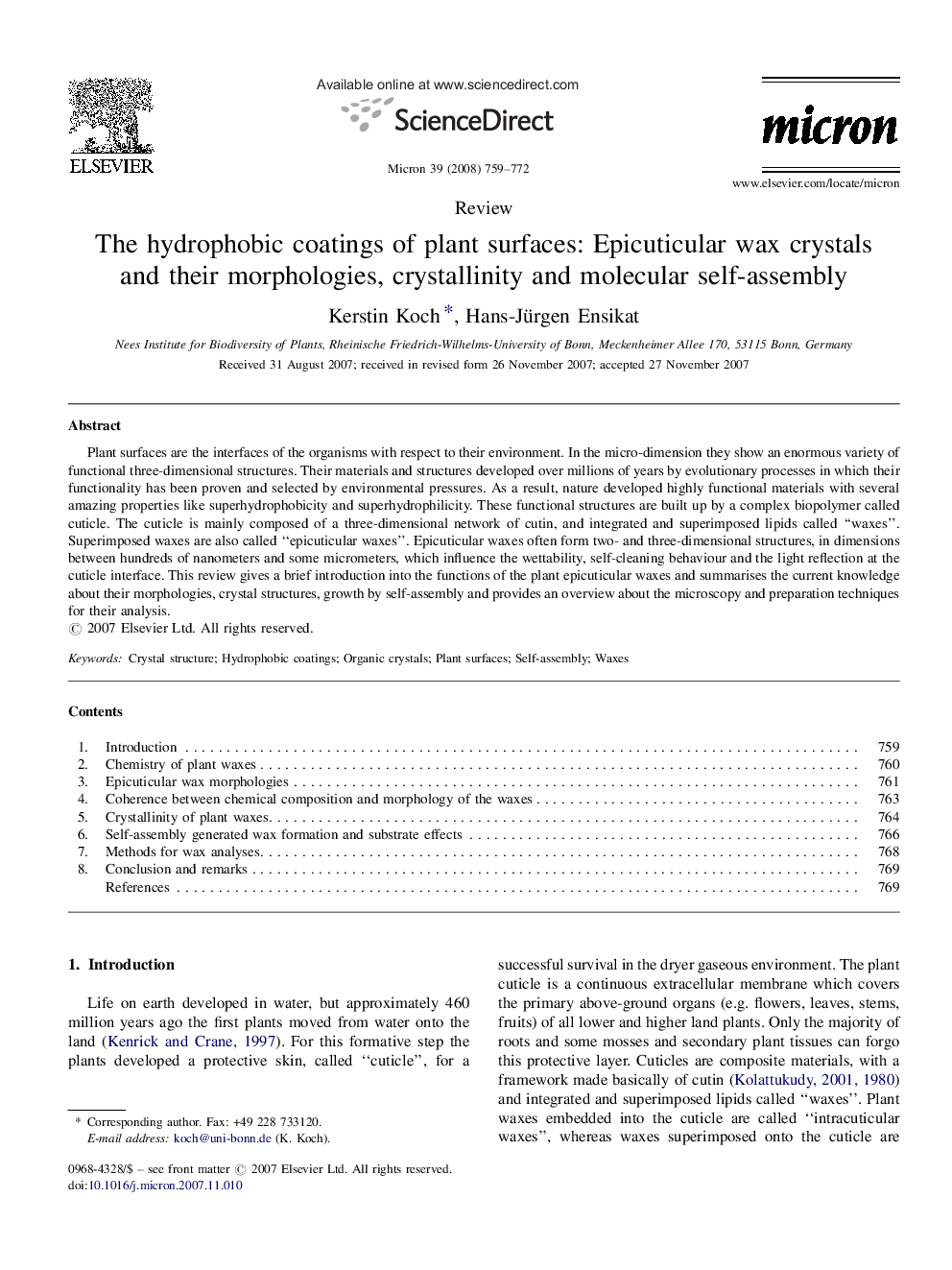| Article ID | Journal | Published Year | Pages | File Type |
|---|---|---|---|---|
| 1589837 | Micron | 2008 | 14 Pages |
Abstract
Plant surfaces are the interfaces of the organisms with respect to their environment. In the micro-dimension they show an enormous variety of functional three-dimensional structures. Their materials and structures developed over millions of years by evolutionary processes in which their functionality has been proven and selected by environmental pressures. As a result, nature developed highly functional materials with several amazing properties like superhydrophobicity and superhydrophilicity. These functional structures are built up by a complex biopolymer called cuticle. The cuticle is mainly composed of a three-dimensional network of cutin, and integrated and superimposed lipids called “waxes”. Superimposed waxes are also called “epicuticular waxes”. Epicuticular waxes often form two- and three-dimensional structures, in dimensions between hundreds of nanometers and some micrometers, which influence the wettability, self-cleaning behaviour and the light reflection at the cuticle interface. This review gives a brief introduction into the functions of the plant epicuticular waxes and summarises the current knowledge about their morphologies, crystal structures, growth by self-assembly and provides an overview about the microscopy and preparation techniques for their analysis.
Related Topics
Physical Sciences and Engineering
Materials Science
Materials Science (General)
Authors
Kerstin Koch, Hans-Jürgen Ensikat,
